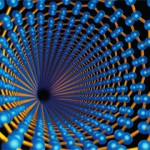Results: In RASFs, PBEF was up-regulated by TLR ligands and cytokines that are characteristically present in the joints of patients with RA. In synovial tissue, RASFs were the major PBEF-expressing cells. A predominance of PBEF was found in the synovial lining layer and at sites of invasion into cartilage. Levels of PBEF in serum and synovial fluid correlated with the degree of inflammation and clinical disease activity. Moreover, PBEF itself activated the transcription factors NF-kB and activator protein 1 and induced IL-6, IL-8, MMP-1, and MMP-3 in RASFs as well as IL-6 and TNF-a in monocytes. PBEF knockdown in RASFs significantly inhibited basal and TLR ligand-induced production of IL-6, IL-8, MMP-1, and MMP-3.
Conclusion: Our findings establish PBEF as a proinflammatory and destructive mediator of joint inflammation in RA and identify PBEF as a potential therapeutic target.
Crucial role of visfatin/pre–B cell colony-enhancing factor in matrix degradation and prostaglandin E2 synthesis in chondrocytes: possible influence on osteoarthritis. (Arthritis Rheum. 2008;58:1399-1409.)
Abstract
Objective: Prostaglandin E2 (PGE2) is one of the main catabolic factors involved in osteoarthritis (OA), and metalloproteinases (MMPs) are crucial for cartilage degradation. PGE2 synthesis under inflammatory conditions is catalyzed by cyclooxygenase 2 and microsomal PGE synthase 1 (mPGES-1), whereas NAD+-dependent 15-hydroxy-PG dehydrogenase (15-PGDH) is the key enzyme implicated in PGE2 catabolism. The present study was undertaken to investigate the contribution of visfatin, an adipose tissue-derived hormone, to the pathophysiology of OA, by examining its role in PGE2 synthesis and matrix degradation.
Methods: The synthesis of visfatin by human chondrocytes from OA patients, with and without stimulation with interleukin-1b (IL-1b) and the role of visfatin in PGE2 synthesis were analyzed by real-time reverse transcriptase-polymerase chain reaction (RT-PCR) and immunoblotting. The effects of visfatin (1-10 microg/ml) on mPGES-1 and 15-PGDH synthesis, on the subsequent release of PGE2, and on MMP-3, MMP-13, ADAMTS-4, ADAMTS-5, and PG synthesis by primary immature mouse articular chondrocytes were examined by quantitative RT-PCR, immunoblotting, and enzyme-linked immunosorbent assay. Finally, small interfering RNA (siRNA) was used to assess the influence of visfatin on IL-1b-induced release of PGE2 in immature mouse articular chondrocytes.
Results: Human OA chondrocytes produced visfatin, and visfatin synthesis was increased by IL-1b treatment. Visfatin, like IL-1b, triggered excessive release of PGE2, due to increased mPGES-1 synthesis and decreased 15-PGDH synthesis. Visfatin knockout with siRNA reduced IL-1b-induced PGE2 overrelease. Visfatin triggered ADAMTS-4 and ADAMTS-5 expression and MMP-3 and MMP-13 synthesis and release, and reduced synthesis of high molecular weight PG by immature mouse articular chondrocytes.
